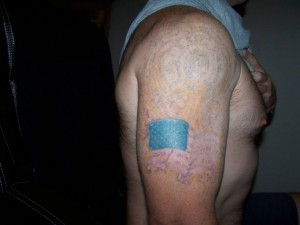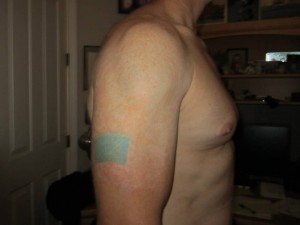So the event you commemorated with a tattoo is something you’d rather not remember. Or the tattoo you got in your 20s no longer reflects the real you. How can I get rid of your “tat”?
Today’s laser technology makes it possible to eliminate or fade most tattoos In the past, tattoos were surgically shaved, scraped or frozen off, or peeled away with chemicals.Sometimes this would leave a scar.
A few points to pounder before you INK…….
1. Not all tattoos will disappear
It’s important to set your expectations by speaking with a laser treatment expert. Some tattoos fade only partially after these treatments.
2. Older is better
How long ago did you get your tattoo? The answer makes a difference. Older tattoos fade generally more easily with laser treatments than newer ones.
3. Body placement matters
Where did you get your tattoo? Fading is generally slower for tattoos located further down the arm or leg.
4. Who did it?
Did you get an amateur tattoo? Those are usually easier to remove than professional tattoos.
5. Different colors, different lasers
No single laser can remove all tattoo colors. Different dyes respond to different light wavelengths. Black and dark green are the easiest colors to remove; yellow, purple, turquoise and fluorescent dyes are hardest to fade.
6. Your skin may change
Tattooing itself may scar or change skin texture, an effect often hidden by the dyes. If laser removal uncovers skin changes, you may be left with what looks like a “ghost” of your old tattoo.
7. Sunscreen can help
Laser treatments may darken or lighten skin pigment over and around the tattoo. Apply sunscreen before and after laser tattoo removal to minimize changes in your skin pigment. For the same reason, wait for your tan to fade before having a tattoo removed.
8. The darkening effect
Certain cosmetic tattoos, such as pink, white and flesh-colored lip liners, may darken immediately with laser therapy. This effect can usually be corrected with further treatment. If immediate skin darkening is a concern, the laser should be tested on a small spot first.
9. Are you allergic?
If you experienced an allergic reaction when getting your tattoo — intense itching and swelling — tell your doctor. Using a “Q-switched” laser to remove the tattoo may trigger a more serious allergic reaction.
Finally, before getting more body art, remember that it is meant to be permanent. Make sure the tattoo you are thinking about is one you won’t mind having later in life!







